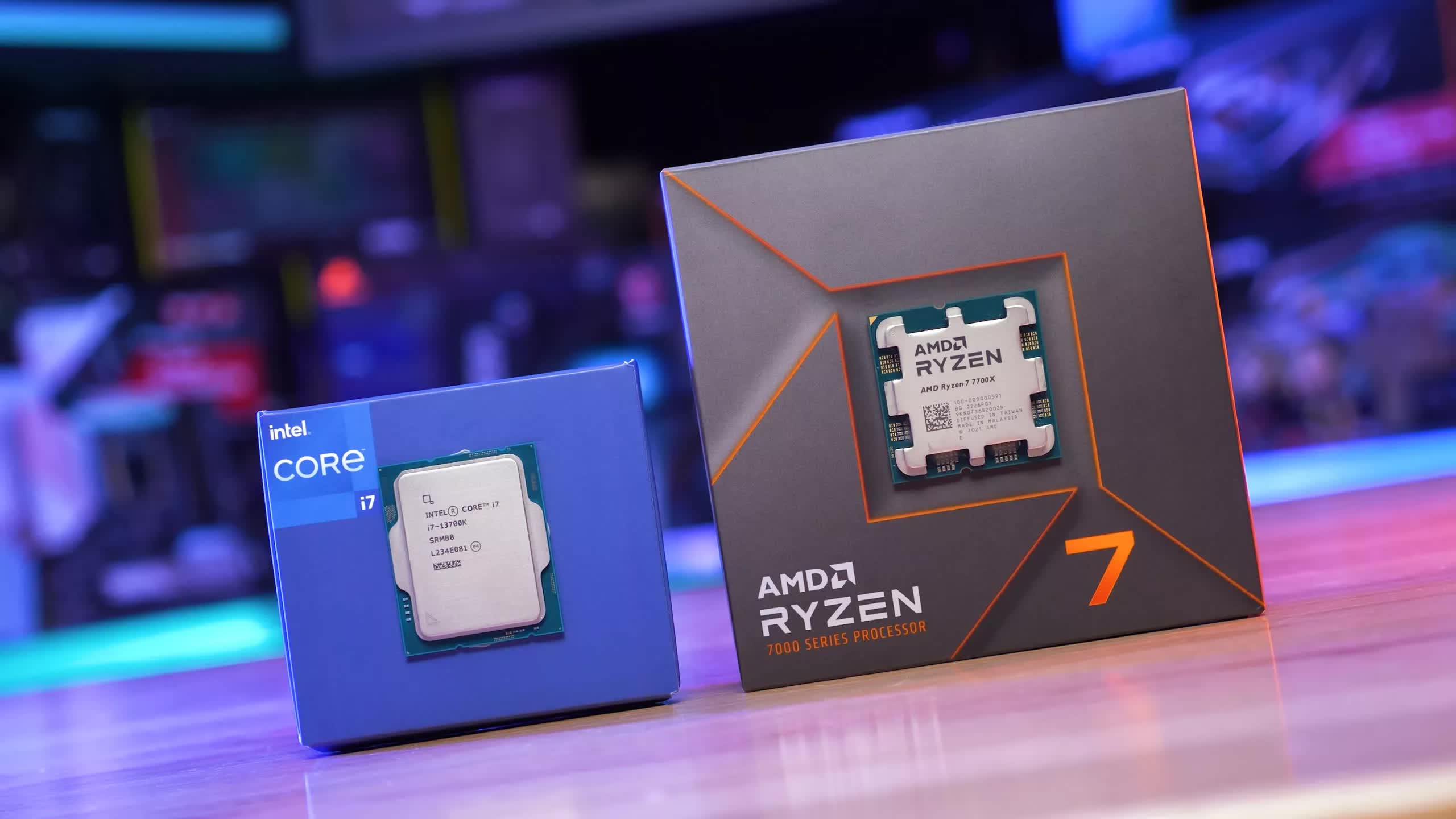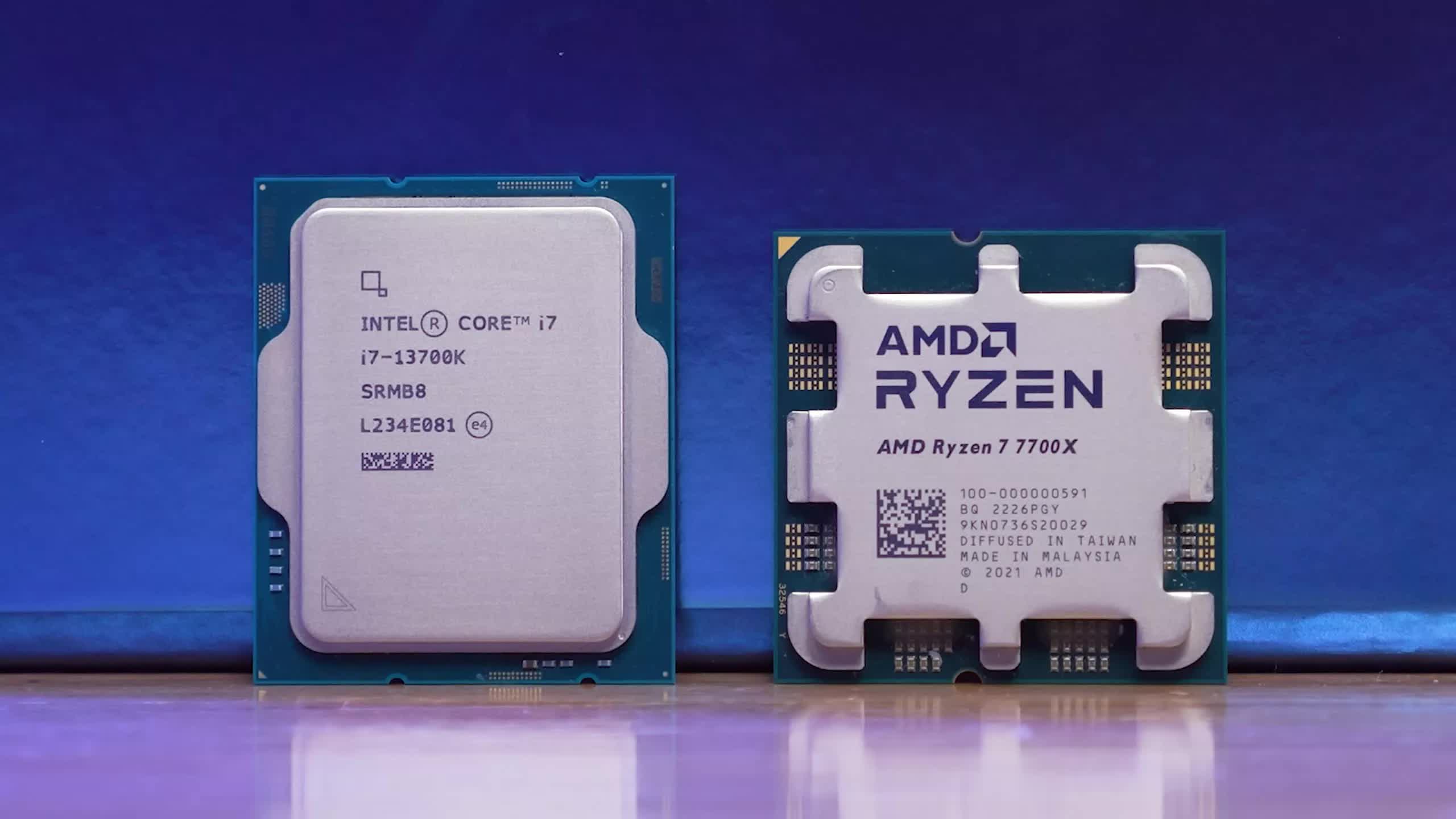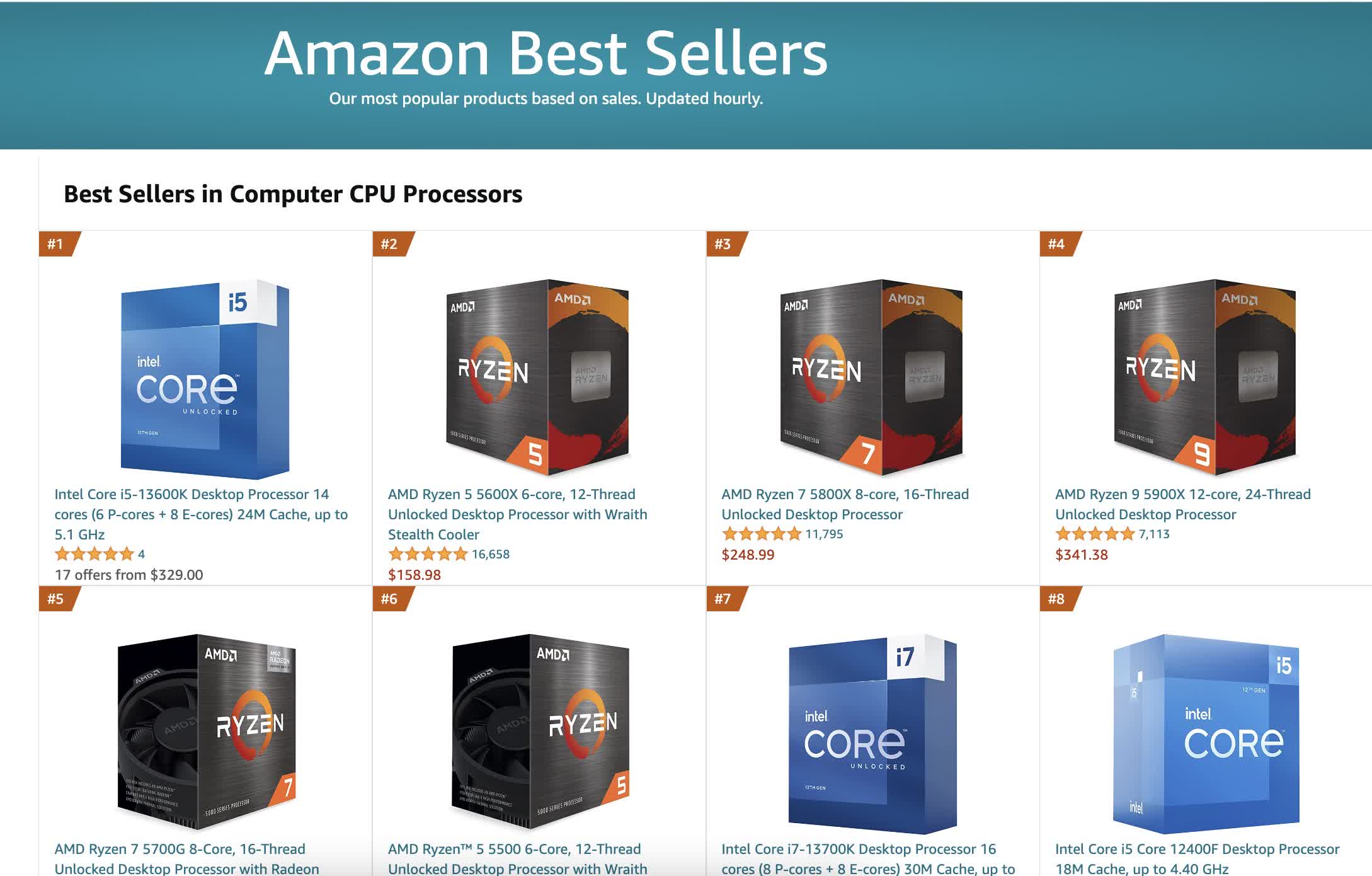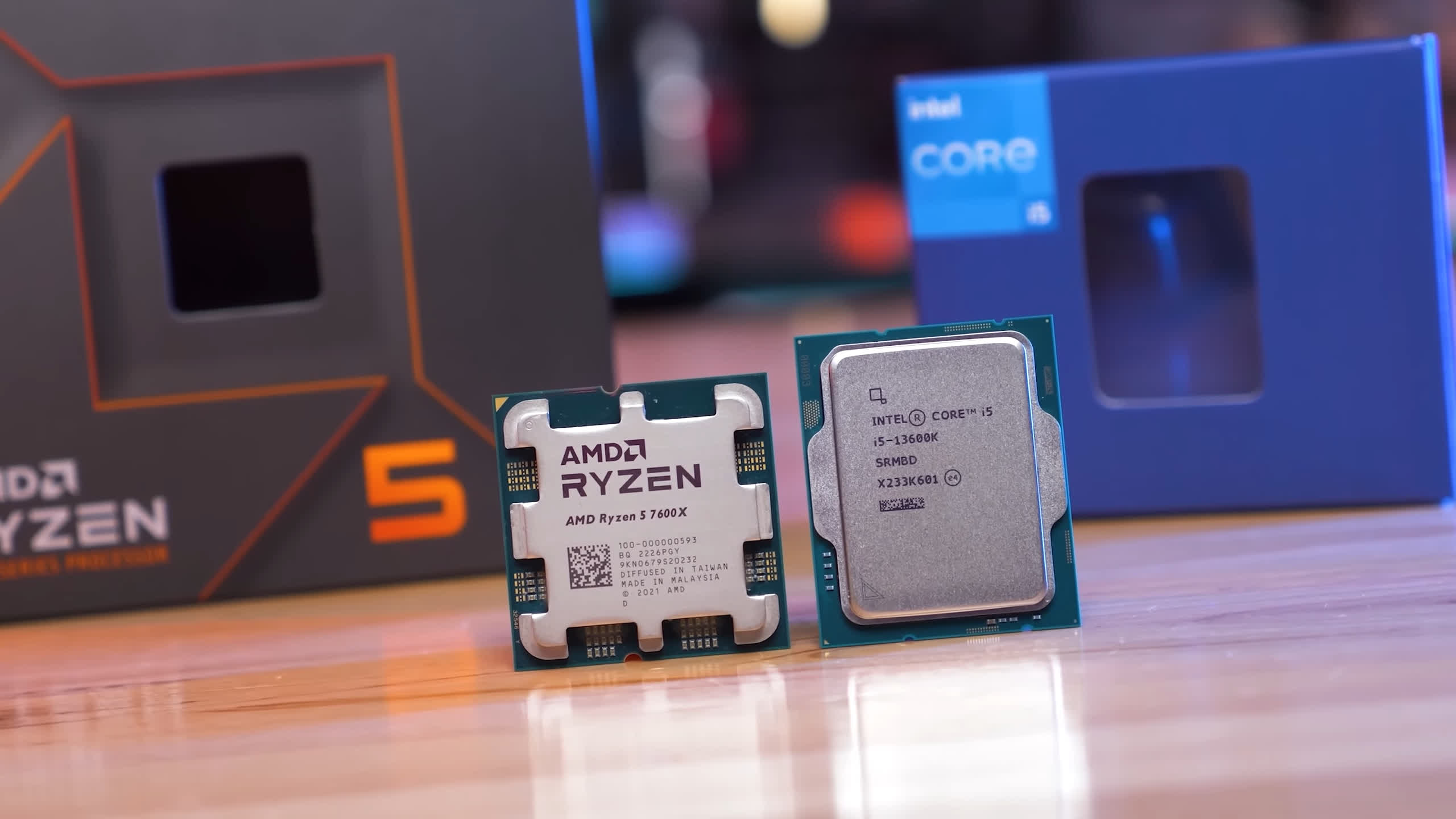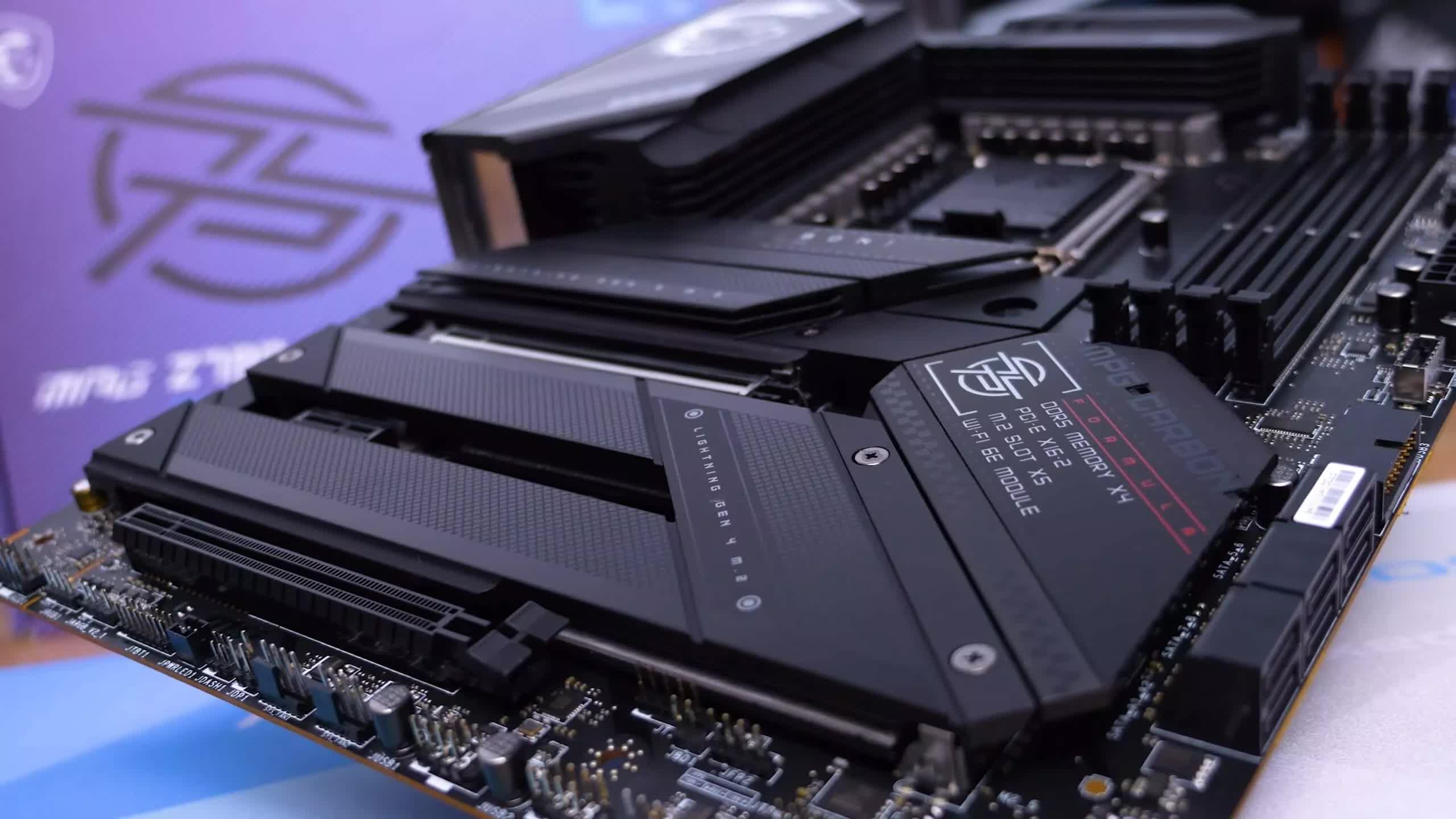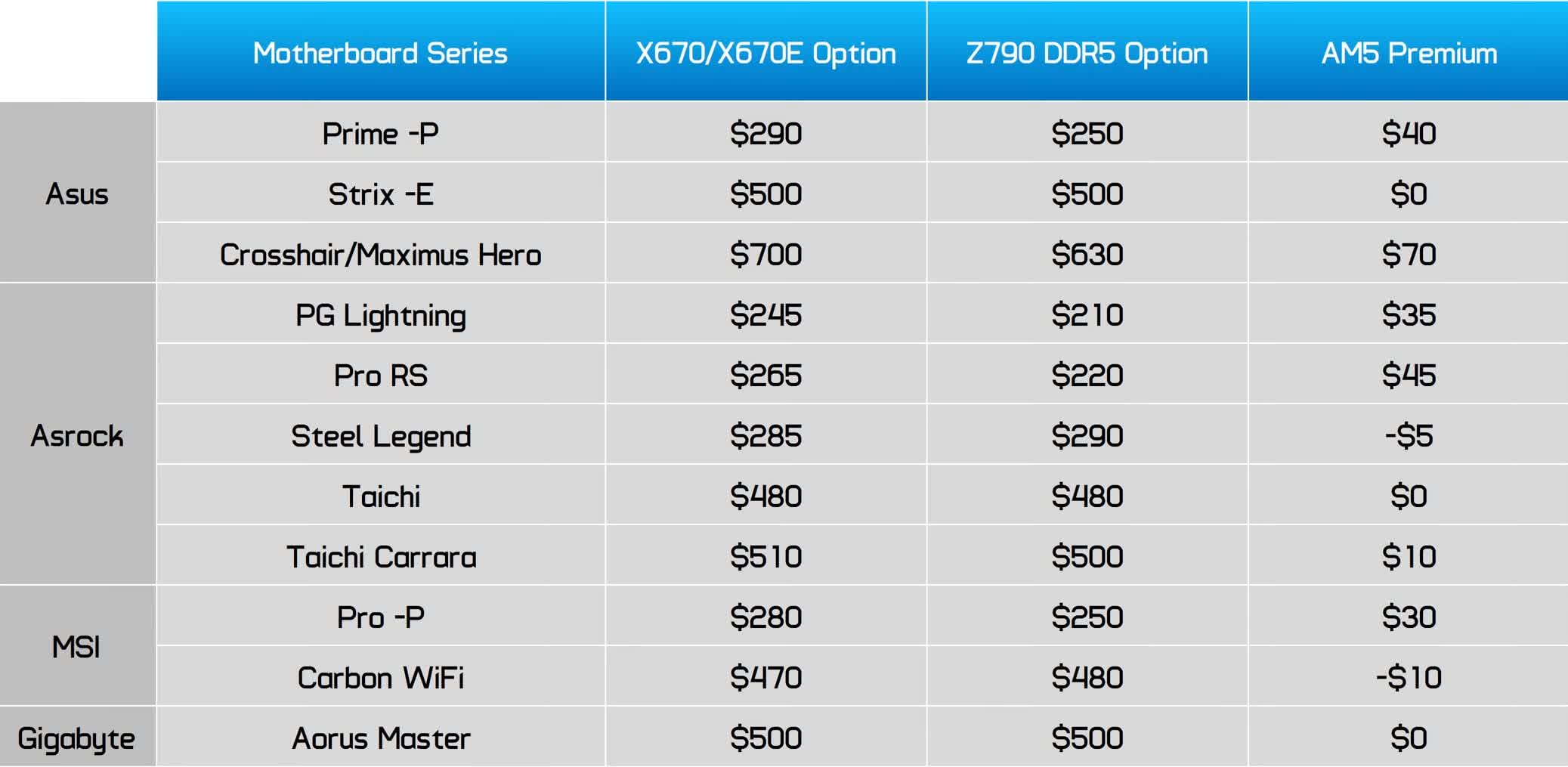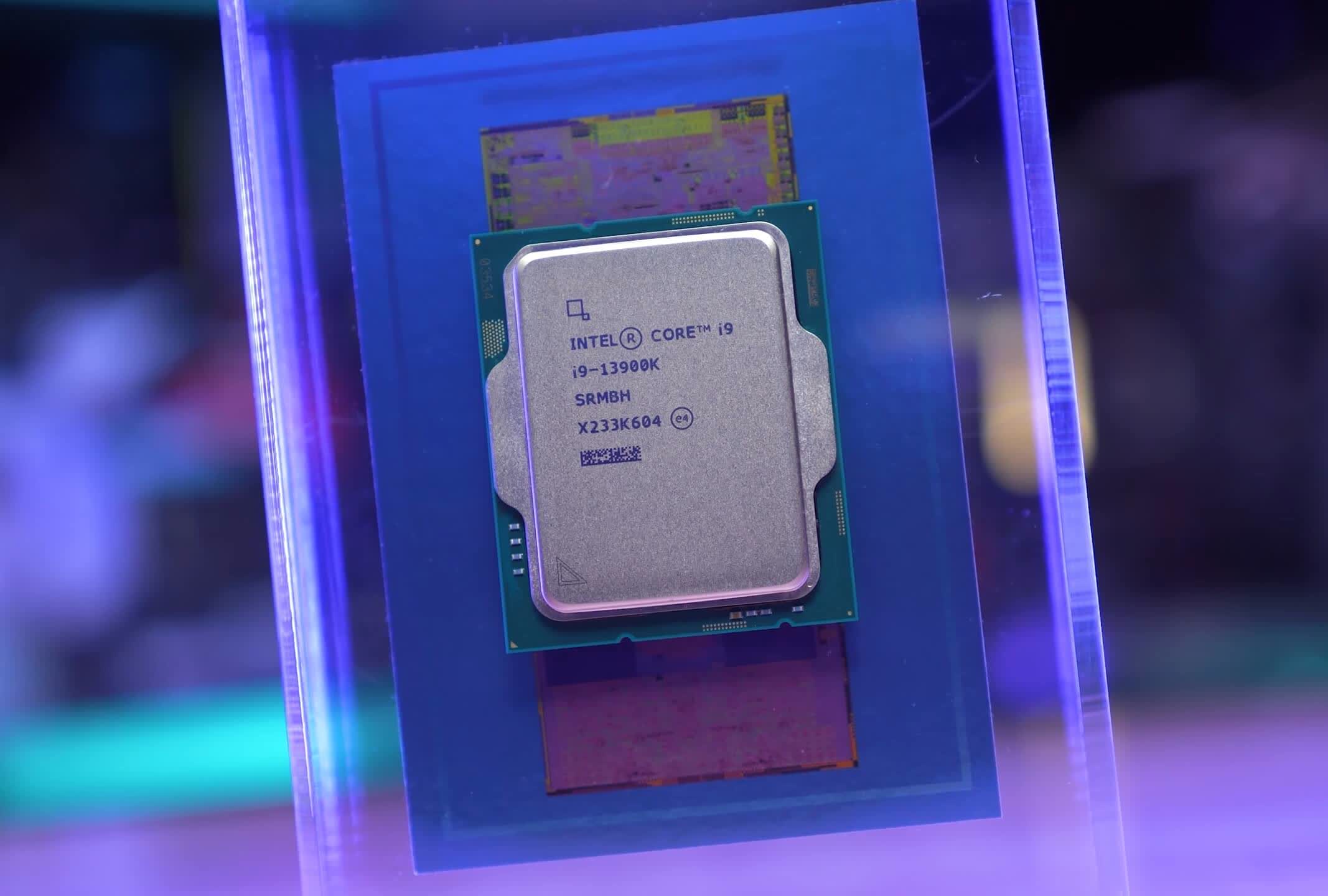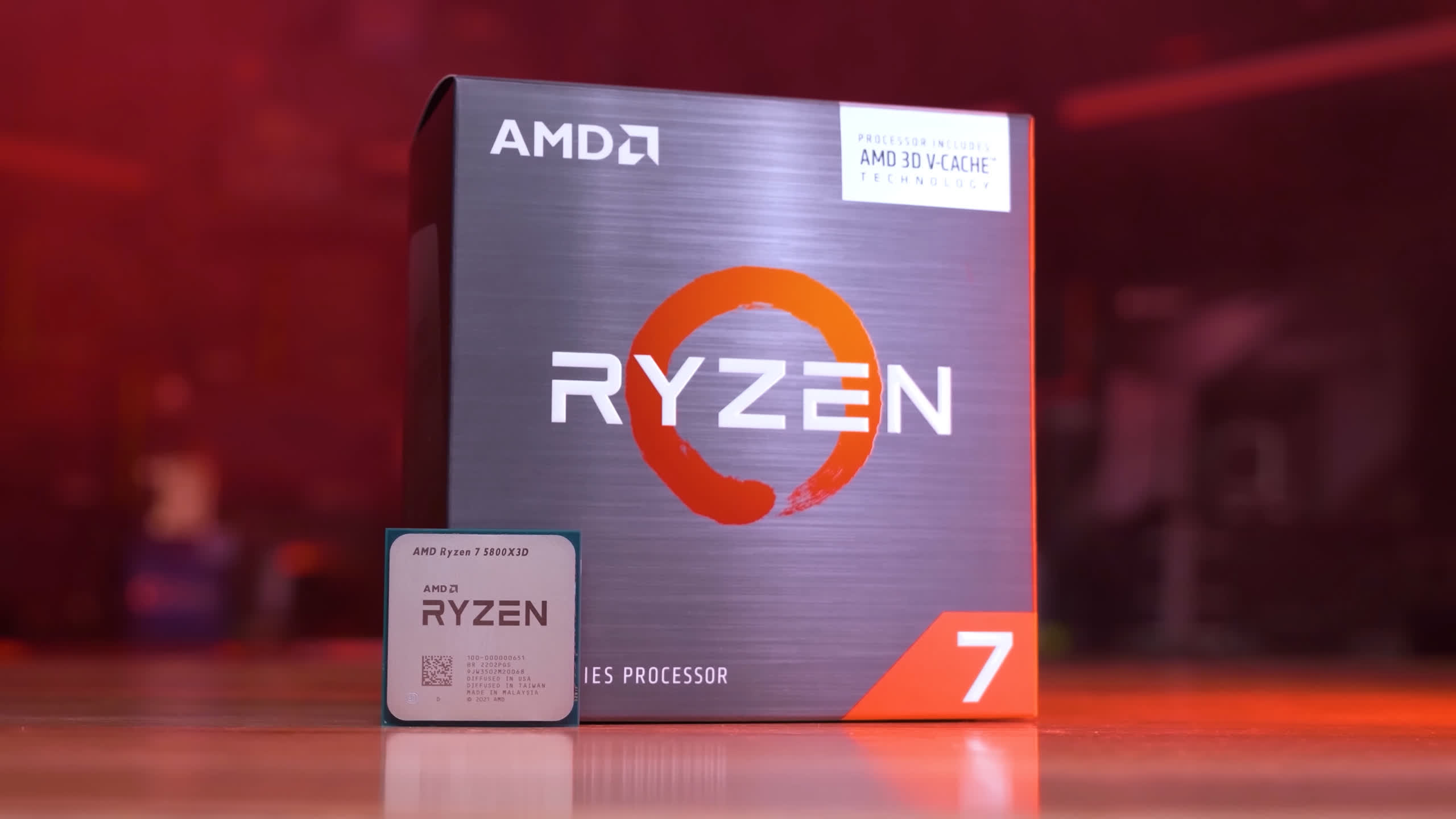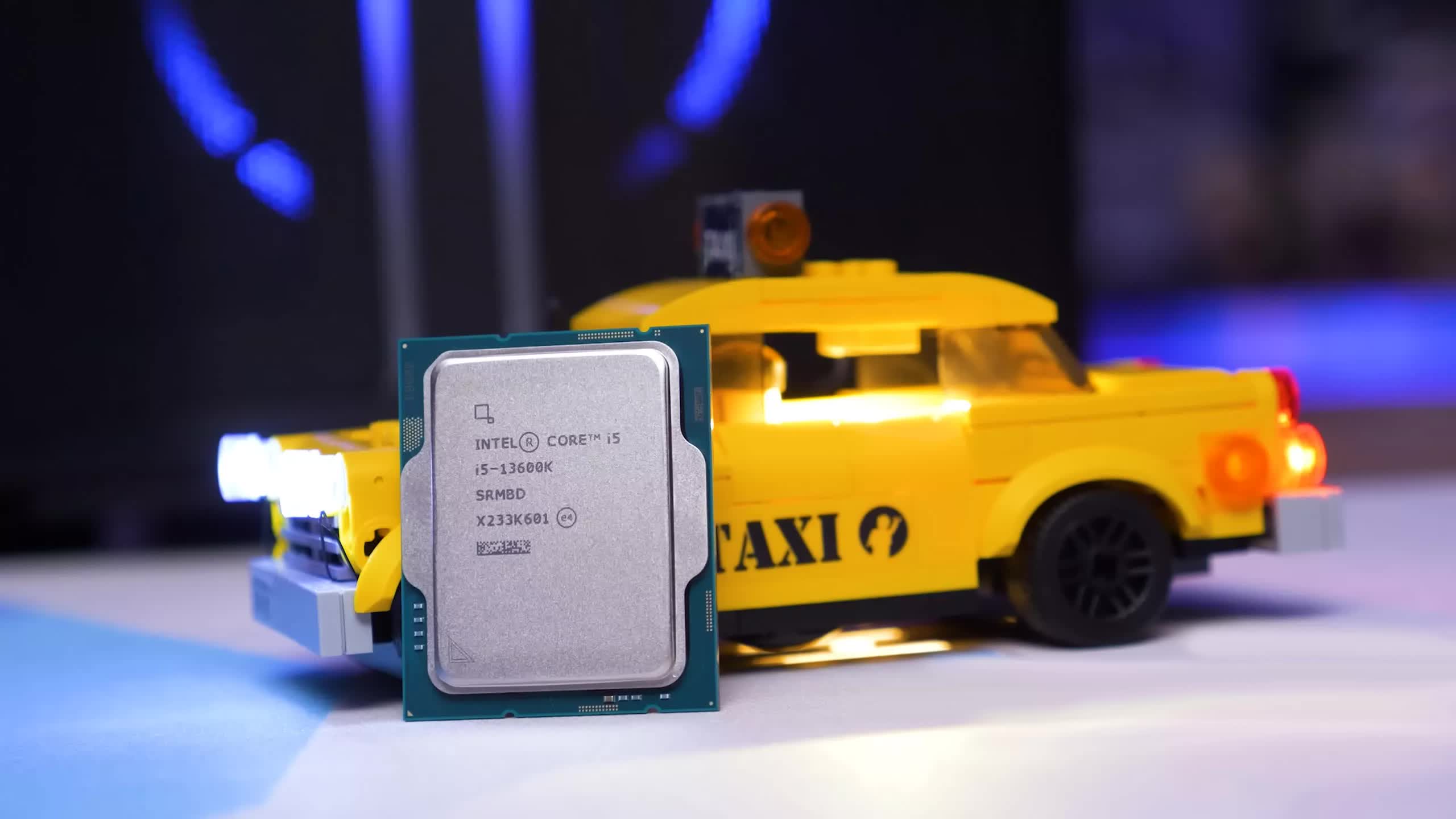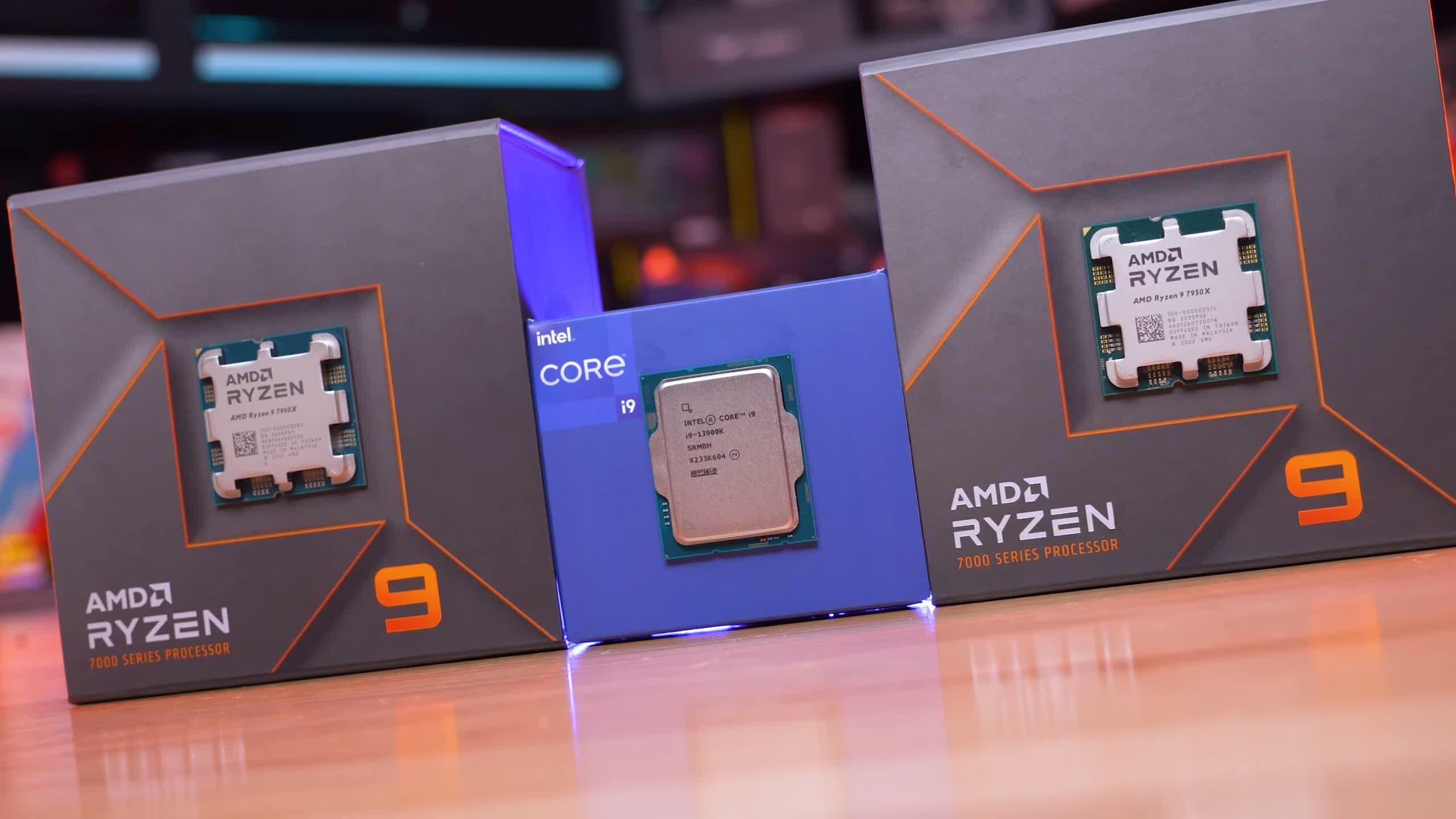In context: A couple of weeks ago we posted an update looking into how AMD's Zen 4 CPU launch fared and today we're back with a similar preliminar analysis, but this time looking at Intel's Raptor Lake launch. These are the two big CPU launches of 2022 and after examining some of the numbers, it's pretty clear that one release has gone a lot better than the other.
We're about a week and a half from Intel's 13th-gen Raptor Lake series launch which so far has included three K-SKU processors and three very similar KF models (without integrated graphics). While the Core i9-13900K was a bit of fizzer due to its high power consumption and thermals, the Core i7-13700K and Core i5-13600K both turned out to be genuinely great options with strong gaming performance, excellent productivity capabilities, and decent value on the LGA 1700 platform. The first step to a successful launch is, of course, making a good product and Intel have delivered this generation.
The big question mark today and moving forward though will be if Intel's 13th-gen limited upgrade path would hold back sales. After all, if you're buying a new 600 or 700 series motherboard for a new Raptor Lake CPU, that's the end of the line for you, as Intel is expected to move to a new socket and platform with their 14th generation. Throughout the AM4 lifecycle, this lack of platform longevity for Intel caused headaches as those already on AMD's platform could upgrade their CPU without much hassle, whereas in most cases Intel upgrades were more difficult and costly.
But in 2022 we're in a bit of a different situation as both AMD and Intel are trying to tempt users across to their new platforms: AMD with AM5, and Intel with LGA 1700. Sales for AM5 CPUs have been disappointing at launch due to a variety of factors, but that's not the case for Intel: Raptor Lake has been one of Intel's better launches in recent years and buyers looking for that full platform upgrade are choosing Intel over AMD on the majority of occasions. The strengths of CPUs such as the 13600K are proving to be tempting for buyers and these strengths are outweighing some of the cons such as platform longevity.
Raptor Lake vs Zen 4 Sales
As far as hard numbers are concerned Tech Epiphany on Twitter continues to do a great job of collecting sales figures from Mindfactory in Germany. Comparing the Raptor Lake launch to the Ryzen 7000 launch across a similar timeframe, Intel sold 40-50% more units of their new CPUs, so 13th-gen only LGA 1700 parts. That's a large jump and while AM5 sales have fallen away quickly after its launch earlier in the month, Raptor Lake is still going relatively strong in its second week of availability. Right now at Mindfactory there are four 13th-gen SKUs outselling the most popular AM5 part.
" CPU Retail Sales Week 43 (post RPL Launch)
--- TechEpiphany (@TechEpiphany) October 30, 2022
Total: 6715 ("+6.33%)
AMD:
4850 ("+13.8%) units sold, 72.23% ("+4.77%),
ASP: 319.08 ("+7.7%)
Rev: 1'547'545 ("+22.7%), 70.19%
Intel:
1865, 27.77%,
ASP: 352.49
Rev: 657'391 ("-16.8%), 29.81%#AMD #Intel $AMD #AMDRyzen pic.twitter.com/LHQfAT753R
This increased level of interest in Intel processors is having an impact on Amazon sales as well. When we looked at Ryzen 7000 about 10 days post-launch, there were no parts in the top 10 best selling CPUs list, and the best positioned was the 7950X in 18th place.
But with Intel, the Core i5-13600K is now sitting in the #1 place, while the 13700K is in 7th. The KF models of these SKUs are also sitting nicely inside the top 20, in fact, if you combined the 13600K and 13600KF we're sure Intel's Raptor Lake Core i5 offering would be even more dominating week on week.
13th-Gen is Pretty Good
But why is Intel currently in the lead for those looking at a bleeding edge processor? Well, one reason is the product itself. In the key battles between Core i5 vs. Ryzen 5 and Core i7 vs. Ryzen 7, Intel has the more compelling CPU right now, which we covered extensively in our reviews.
But to simplify things here, the Core i5-13600K offers similar gaming performance to the Ryzen 5 7600X, while smashing it in productivity performance. Buyers after a CPU around that $300 price point are getting a more well rounded, balanced part from the 13600K.
And it's a similar story with the 13700K, it matches the Ryzen 7 7700X in gaming when using DDR5 memory, but typically delivers tier-above productivity performance, especially in multi-threaded applications where it's often in the ballpark of the 7900X. In that $400-ish price range, it's quite compelling depending on what sort of things you're wanting to do with your processor.
Motherboard Pricing
Perhaps the bigger selling point in favor of Intel right now is platform cost. AM5 motherboards are expensive and that hurts the value proposition for those looking to do a full platform upgrade. This very issue is negating the 'future-proofing' aspects to AM5 for now. When we're talking about a global recession and people not being able to spend as much on PC hardware, things like total platform costs become a bigger factor in the "here and now."
In the last update we compared pricing for X670 and Z790 motherboards and found that generally the Intel board from the same company and series was a bit cheaper. This was enhanced by a greater proportion of Z790 motherboards below $250 and a lower overall median price for a 700 series board. The saviour for AMD was supposed to be much more affordable B650 and B650E motherboards, which at the time weren't yet available.
But AMD B650 boards are now available and we couldn't be more disappointed with pricing. Of the 26 boards currently listed on Newegg, just seven models are priced at or below $200, with an average asking price of $250 and a median of $235. On the Intel side, just looking at Z790 and we have 6 options at or below $200. That's Z-series Intel vs B-series AMD, not a pretty picture for AMD.
Now, of course, some of these cheap Z790 offerings are for DDR4-only products, while all AM5 models are DDR5, but you can still grab a Z790 DDR5 board for as low as $200 - not that we'd necessarily recommend that as the entry-level models tend not to be the greatest quality, but it's still an option.
And crucially, that's not the only choice you have if you're going with an Intel upgrade. There are over 70 Z690 boards to choose from on Newegg, with a median price of $250 and a whopping 26 models priced below $200, so right now there's as many low cost Z690 boards as there are B650 series boards in total. Even if we restrict this to just DDR5 boards, there are 10 sub-$200 options and plenty that we've tested and know to be decent, like the MSI Pro-A and Gigabyte Aorus Elite.
And this isn't even factoring in Intel's own B series, which are compatible with 13th-gen parts. All of these B660 models on Newegg are priced below $250, with a median of just $140. The board we found to be the best was the MSI Pro B660M-A which is available for $140 and there's a DDR5 model for $160. There's also a variant without Wi-Fi for even less.
The basic summary to all that motherboard information is that if you were doing a platform upgrade, Intel's Z790 is a cheaper option than X670, and Z690 is cheaper again. Intel also has AMD beat for budget board pricing, with B660 much cheaper than B650 - yes confusing names there, but AMD's B650 isn't giving buyers affordable options.
Intel is also able to tempt buyers with the carrot of DDR4 memory support and the ability to potentially carry over memory from your current system, further reducing the cost to upgrade to a new platform. In some situations we probably wouldn't recommend going DDR4 as DDR5 can provide a performance advantage in high-end configurations, and you'll most likely be able to carry over that DDR5 memory to your next CPU upgrade - but still, Intel gives buyers the option, and AMD doesn't.
There was a lot of hope that AMD B650 motherboards would be better priced and positioned than X670, but that hasn't eventuated, at least with current pricing and the boards on offer right now. Intel is capitalizing on that pricing advantage and that will likely continue until AMD decides to do something about AM5's value.
But AM4 is Still Popular
The question then is if AMD wants to adjust anything, because there's an elephant in the room that we haven't yet mentioned and that's AM4. Despite Intel seeing strong sales for 13th-gen processors and beating AMD comfortably in the current gen vs current gen battle, AMD is still the dominant player in the DIY space for overall CPU sales. And that's because the AM4 platform continues to be highly attractive to buyers, in part thanks to the Ryzen 7 5800X3D.
If we go back and look at overall CPU sales from Tech Epiphany, the Ryzen 7 5800X3D dominates the market, and other AM4 options significantly outsell newer generation models. The 5800X3D alone sold as many units as 13th-gen and AM5 combined at Mindfactory in the most recent week, with strong sales in other regions as well thanks to discounts that have seen it priced as low as $330. That's a killer price for a processor as powerful as the 5800X3D, which is able to match the Core i5-13600K's gaming performance.
There are plenty of AM4 owners that have switched over to AMD's platform across the last few years that it often makes no sense to consider a platform upgrade at all, especially if you're not concerned about productivity performance. For gamers that have an AM4 motherboard, the 5800X3D is drop-in compatible and just makes a lot more sense than going for a full motherboard plus (in some cases) memory upgrade. The reviews of Raptor Lake and Zen 4 confirmed for many AM4 owners that the better choice isn't actually upgrading platforms at all, but rather getting the 5800X3D given how closely it performs to newer models.
So while Intel's Raptor Lake sales are relatively strong and better than some past Intel launches, AMD's AM4 platform continues to be a thorn in their side and the strengths of 13th-gen don't appear to be enough to overcome the strengths of the 5800X3D and other Zen 3 processors. In the DIY market there are just too many upgraders with existing PCs versus new system builders - where Raptor Lake makes most sense - to swing sales significantly. Of course, this will be a different story in areas like OEM sales, pre-builts and boutique system builders, but for DIY sales it doesn't appear the dominance of AMD is close to an end.
The by-product of this is that AMD's own existing parts are cannibalizing sales of their newer models. Whether this is a concern for AMD we can't be sure, as people are still buying heaps of AM4 CPUs either way - and AM5 CPUs are likely more expensive to manufacture given the increase in wafer costs for TSMC 5nm vs 7nm. AMD is usually quite flexible on prices and like to discount parts where necessary, but the fact we haven't seen any movement there suggests AMD is comfortable with where things lie for now.
---
Where to from here? From Intel's perspective, they don't need to do much more to convince new PC builders that 13th-gen is the right choice. Parts like the Core i5-13600K in conjunction with great motherboard offerings and prices is already doing that job. But convincing AM4 owners to switch over and ignore the 5800X3D will prove more difficult. Productivity performance from parts like the 13700K and 13900K is an advantage, but for the gaming market at large, Raptor Lake doesn't offer enough of a performance gain over the 5800X3D.
Intel needs to consolidate their position offering extremely good value and push that further with new locked 13th-gen parts, which are likely to arrive early next year. In the previous generation, parts like the Core i5-12400F were outstanding options for budget systems - offering that again with new Raptor Lake models would be ideal. If they can produce models with similar gaming performance to the 5800X3D but with pricing closer to $200 or less, that would be very tempting even for AM4 owners.
For AMD, the AM4 platform and 5800X3D remain very compelling, so they're already offering enough for owners that want simple drop-in CPU upgrades. But in other areas, there is room for improvement. AMD is way off from convincing buyers the AM5 platform is the right choice. If they want to compete strongly with 13th-gen, they need to drop pricing for current models and make a big effort to reduce motherboard prices. Good B650 boards need to be available for ~$150 and the Ryzen 5 7600X needs to be priced comfortably below the Core i5-13600K.
If AMD doesn't want to reduce Zen 4 pricing, they need to get new V-Cache models out the door as soon as possible. If they can offer the fastest gaming CPU on the market with compelling productivity as well, something like a 7950X3D, that would help capture the buyers that just want the best and aren't too concerned with pricing.
Right now they don't have that, and those buyers would likely choose Intel. Six-core Zen 4 should be priced around $200, something like a 7600 non-X model, while a new lower-cost 8-core model would also be required. In addition to that, AMD would still need to lower motherboard prices to capture budget shoppers.
